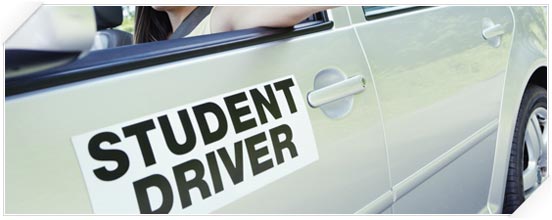Do you remember your high school driver’s education class? While there may be some things you want to forget about driver’s ed – like sitting in the back seat as your inexperienced peers took the wheel, the nerve-wracking experience of pulling out of the parking lot for the first time — there are plenty of things you should remember every time you get in the car. Brush up on your driving safety with these handy tips:
1. Be a defensive driver. One of the best lessons you should have learned in driver’s ed is how to look ahead and prevent accidents before they happen. This isn’t always easy to do for young drivers, but it’s a skill worth remembering and maintaining as an experienced driver. Looking 10 to 12 seconds down the road for potential trouble spots and checking all mirrors every few seconds will help avoid accidents.
2. Remember to signal. Turn signals are installed on cars to help other drivers anticipate actions, and it’s dangerous when drivers forget to use them. Not using turn signals is a problem that causes 2 million accidents annually. Horns and lights, when appropriate, can also be used to signal other drivers.
3. Have an escape route. Rear-end crashes are the most common type of car crashes, and according to the National Highway Traffic Safety Administration, young male drivers under age 18 are the most likely to be involved in them. To avoid this, don’t tailgate and always have an escape route, so you can move quickly to another lane or location if the car in front of you brakes hard.
4. Grip the steering wheel correctly. For many drivers, the correct way to hold a steering wheel was taught as the “10 and 2 positions” of a clock. It is now recommended that drivers hold the wheel at the “9 and 3” position, because it’s safer to avoid injuries to a driver’s hands or fingers if the airbag activates. If hands are high up on the steering wheel, they could be over the plastic cover if an airbag deploys in an accident.
5. Check your mirrors. Before heading on the road, be sure to check that mirrors are adjusted correctly to minimize blind spots while driving. Adjusting your mirrors is only half the battle, be sure to use them too; look briefly to the right or left before switching lanes or making turns to ensure you’re aware of your surroundings and others on the road.

What to Remember From Driver’s Ed
by
Tags:

Leave a Reply